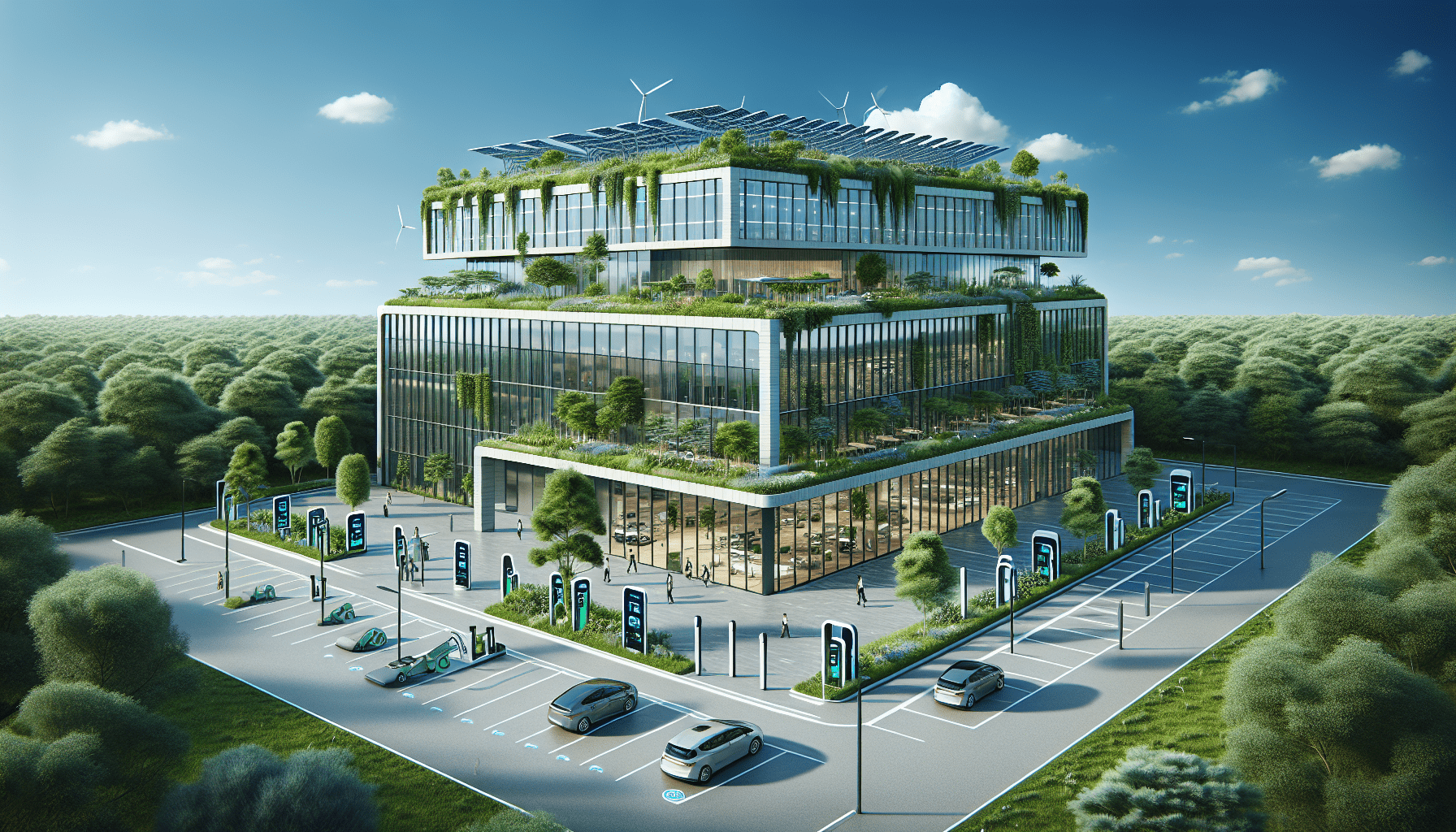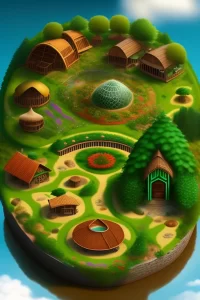In our journey towards a greener future, creating sustainable office buildings has become essential. In “How Do You Design a Sustainable Office Building?” we explore the innovative strategies and thoughtful planning needed to construct eco-friendly workspaces. From integrating energy-efficient technologies and materials to optimizing natural light and ventilation, we’ll uncover the key elements that make a building truly sustainable. By focusing on these practices, we can reduce our carbon footprint, foster healthier work environments, and contribute to the well-being of our planet. Together, let’s discover how we can build not just offices, but legacies of sustainability for generations to come. Have you ever wondered how to design a sustainable office building? Given the increasing awareness and emphasis on environmental sustainability, this question is more relevant today than ever. Building an eco-friendly workspace isn’t just a trend; it’s a necessary step toward a healthier planet and a more responsible business ethos. Not only does it reduce our carbon footprint, but it can also offer economic and health benefits. So, let’s dive in together and explore the many facets of designing a sustainable office building.

What Defines a Sustainable Office Building?
Sustainability in architecture refers to designs that reduce energy consumption, minimize waste, and improve overall efficiency. When we say ‘sustainable office building,’ we mean a structure that includes eco-friendly materials, employs energy-efficient systems, and encourages healthier working environments.
Key Elements of Sustainability
Several elements make an office building sustainable. From utilising renewable energy sources to incorporating natural ventilation systems, each component plays a role in the building’s overall sustainability.
- Energy Efficiency: Using less energy to perform the same task.
- Water Conservation: Implementing systems that reduce water usage.
- Material Selection: Choosing eco-friendly building materials.
- Indoor Environmental Quality: Ensuring good air quality and natural lighting.
- Site Selection: Choosing a location that minimizes environmental impact.
Why Build a Sustainable Office?
Before diving into the ‘how,’ it’s crucial to understand the ‘why.’ The advantages of building sustainable offices stretch from economic gains to health benefits and environmental impact.
Economic Benefits
One of the most compelling reasons to design a sustainable office building is the economic advantage. Though the initial investment might be higher, sustainable buildings often result in lower operating costs.
Health and Well-being
Better indoor air quality, natural lighting, and ergonomically designed workspaces can significantly improve employee health and well-being, reducing sick days and increasing productivity.
Environmental Impact
By reducing waste, conserving energy, and using sustainable materials, we contribute positively to the environment. Sustainable buildings usually have a smaller carbon footprint, making them a responsible choice for our planet.
Principles of Sustainable Design
When we talk about sustainable design, several principles guide the process. Understanding these principles is key to successfully implementing sustainability in our office buildings.
Passive Design
Utilising natural resources like sunlight and wind to reduce the need for artificial heating, cooling, and lighting systems. Employing strategic window placements and insulation can greatly impact energy consumption.
Sustainable Materials
Choosing materials that are recycled, recyclable, or have a minimal environmental impact is crucial. Wood from certified forests, low-VOC paints, and recycled metal are excellent choices.
Efficient Energy Use
Incorporating technologies such as solar panels, LED lighting, and energy-efficient HVAC systems can significantly reduce energy usage, making buildings more sustainable.
Water Efficiency
Water is a precious resource, and sustainable designs often integrate systems like rainwater harvesting, low-flow fixtures, and greywater recycling to reduce water consumption.
Waste Reduction
Implementing waste management systems that recycle and compost can significantly reduce the amount of waste generated by an office building.
Steps to Designing a Sustainable Office Building
Now that we understand the principles, let’s get into the step-by-step process of designing a sustainable office building.
Step 1: Site Selection
The location of your office building plays a crucial role in its sustainability. A site that provides easy access to public transportation, has good solar exposure, and minimal environmental impact is ideal.
Step 2: Initial Planning and Assessment
Assessing the site for potential renewable energy sources, natural ventilation, and water conservation methods is essential. Conduct an environmental impact assessment to understand the site’s limitations and opportunities.
Step 3: Design Development
Develop a design that incorporates sustainable principles. This stage involves collaboration among architects, engineers, and environmental consultants.
Step 4: Material Selection
Choose materials that are energy-efficient, recyclable, and have a low environmental impact. Consult with local suppliers to find materials that meet these criteria.
Step 5: Implementation of Energy Systems
Incorporate renewable energy sources such as solar panels, wind turbines, and geothermal systems. Install energy-efficient windows, insulation, and HVAC systems to reduce energy consumption.
Step 6: Water Management
Implement water-saving technologies including low-flow faucets, rainwater harvesting systems, and perhaps even green roofs which can aid in rainwater management.
Step 7: Waste Management
Develop a waste management strategy that includes recycling programs, composting, and construction waste reduction plans.
Step 8: Indoor Environmental Quality
Ensure good indoor air quality by using low-VOC materials, installing efficient ventilation systems, and incorporating plenty of natural light.
Step 9: Commissioning and Testing
Once the building is complete, commission and test all systems to ensure they are operating as designed. Make any necessary adjustments.
Step 10: Monitoring and Maintenance
Sustainability doesn’t stop at construction. Implementing ongoing monitoring and maintenance plans ensures that systems continue to operate efficiently.
Key Technologies in Sustainable Office Design
Embracing emerging technologies can further enhance the sustainability of our office building. Here are some key technologies that we should consider.
Solar Power
Using photovoltaic panels to capture solar energy can significantly reduce electricity bills and carbon footprint.
Smart Systems
Smart building systems that automate lighting, heating, and cooling based on occupancy and environmental conditions can drastically reduce energy consumption.
Green Insulation
Using recycled materials such as cellulose, cotton, and wool for insulation reduces waste and enhances energy efficiency.
Low-Emissivity Windows
Low-E windows reduce heat transfer, making spaces cooler in the summer and warmer in the winter.
LED Lighting
LED bulbs are energy-efficient and have a longer lifespan compared to traditional lighting options. Using LED can dramatically cut down electricity usage.
Greywater Systems
Greywater systems recycle water from sinks and showers for use in toilets and landscaping, reducing reliance on fresh water.
Sustainable Building Certifications
Certifications can help us gauge how sustainable our office building is. They provide standards and benchmarks against which buildings can be measured.
LEED (Leadership in Energy and Environmental Design)
LEED certification is one of the most recognized standards for sustainable building design. It focuses on areas such as sustainable site development, water savings, energy efficiency, materials selection, and indoor environmental quality.
BREEAM (Building Research Establishment Environmental Assessment Method)
BREEAM is a comprehensive assessment that covers energy, health, innovation, land use, pollution, materials, management, transport, waste, and water.
WELL Building Standard
While WELL focuses more on human health and wellness within the building, it overlaps with sustainability, especially in areas like air, water, light, and comfort.
Green Globes
Green Globes is an online assessment protocol that evaluates environmental impacts and sustainability performance. It covers energy, water, resources, emissions, and indoor environment.
Case Studies
Let’s look at some real-world examples to understand how these principles are applied.
The Edge, Amsterdam
Often touted as the greenest building in the world, The Edge uses smart technology and energy-efficient systems. The building is designed to use 70% less energy compared to traditional office buildings.
One Central Park, Sydney
This building integrates vertical gardens and renewable energy sources. Its design focuses on water and energy conservation, achieving significant reductions in environmental impact.
Bullitt Center, Seattle
Known as the greenest commercial building, it generates its own electricity using solar panels and treats its waste and water on-site. It’s a living blueprint for sustainable design.
Challenges in Designing Sustainable Office Buildings
Despite the benefits, designing a sustainable office building does come with its challenges. Being aware of these challenges can help us better prepare.
Higher Initial Costs
The initial investment for sustainable materials and technologies can be higher. However, these costs are usually offset by lower operating expenses over time.
Technical Expertise
Designing and implementing sustainable systems often require specialized knowledge. Collaborating with experts in sustainable design is crucial.
Regulatory Hurdles
Zoning laws and building codes can sometimes pose challenges. It’s essential to familiarize ourselves with local regulations and work within those frameworks.
Maintenance
Sustainable buildings often require specific maintenance routines to ensure optimal performance. Regular monitoring and maintenance plans are essential.
Future Trends in Sustainable Office Design
The field of sustainable architecture is ever-evolving. Staying ahead of the curve can position us better for future developments.
Adaptive Reuse
Transforming existing buildings into sustainable ones can be more cost-effective and environmentally responsible than new constructions.
Biophilic Design
This design approach incorporates natural elements into the building, improving wellness and sustainability.
Smart Materials
Emerging materials that can respond to environmental conditions (like self-healing concrete) are on the rise.
Net-Zero Buildings
Aiming for buildings that produce as much energy as they consume is becoming more achievable with advancements in technology.
Conclusion
Designing a sustainable office building is not just a blueprint; it’s a responsible and forward-thinking approach to constructing spaces where we work. From understanding the principles and benefits to following a step-by-step process, embracing key technologies, and overcoming challenges, we’ve covered a wide spectrum. With continual advancements and a growing awareness of sustainability’s importance, the future holds exciting possibilities for us all in creating greener, healthier, and more efficient office spaces.
So next time you find yourself involved in designing or retrofitting an office building, consider these principles and steps. Together, we can make a significant positive impact on our planet and our communities. Thank you for taking this journey with us. Let’s build a sustainable future together.


